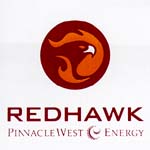 Burrowing
Owl Artificial Burrow Site At Red Hawk Power Plant
Burrowing
Owl Artificial Burrow Site At Red Hawk Power Plant Burrowing
Owl Artificial Burrow Site At Red Hawk Power Plant
Burrowing
Owl Artificial Burrow Site At Red Hawk Power Plant
Arizona Public Service and Pinnacle West Support
The Red Hawk power plant facilities in western Maricopa County in Arizona have generously provided land, materials, and manpower to install 32 artificial burrows in support of the Burrowing Owl Project and Wild At Heart. This is the first large-scale artificial burrow installation in the Project and is also the first to attempt to establish a small/medium size colony in dry wash/creosote flat habitat in a low rainfall part of Arizona. Red Hawk is converting exhausted farm land (cotton) back to original desert habitat approximately 1 kilometer from the burrow sites. There are also some current agriculture areas east and west of the burrow installation. The revegetation and agriculture areas represent the primary food sources for the colony, with some food available from the wash system even in extreme drought years (like 2002). The creation of the burrows, erection and maintenance of the confinement tents, and food delivery for the birds for a month could not have been possible without the help of Arizona Public Service / Pinnacle West volunteers, employees, and funding. The Home Depot located at I-17 and Thunderbird in Phoenix donated all 32 orange "Homer" buckets for the site. Thanks to everyone for their support!
The Red Hawk Burrowing Owl Site
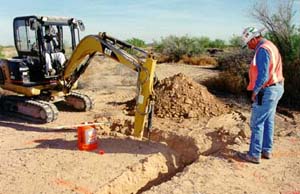 |
Here a Red Hawk construction crew digs the first of the slot trenches used for the underground burrow and entrance tubes. Because of the large number of burrows (32) the layout of the burrows was varied to determine if one layout would be favored over another. Burrows with entrance tubes that have 90 degree and 45 degree bends were used. In addition, some double entrance burrows were installed where each entrance has a 90 degree bend in the entrance tube. Finally, in case some owls favor above-ground burrows, four of the burrows were built using piles of dirt on top of the burrows and tubes. The burrows also used 90 degree entrance tubes, but the tubes are horizontal. |
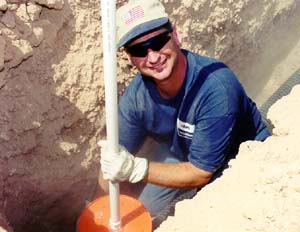 |
One of the Arizona Public Service volunteers fits an inspection tube to the orange bucket used as the burrow. Behind the volunteer can be seen the flexible tubing used for the entrance tube. The inspection tubes will allow us to insert a small video camera directly into the burrow to monitor the success of the burrow while minimizing the impact on any owls present. It is also possible to remove the cap on the tube and listen for owl sounds to determine if the burrow is occupied. A camera is still needed to determine the number of owls present and breeding success. |
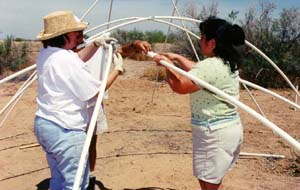 |
Of the 32 burrows installed, 16 burrows were arranged so that groups of 4 would have the burrow entrances close together. These entrances were covered by an open mesh tent that would allow light and air to pass but would not allow the owls to leave. Here APS volunteers construct the tent frame using PVC (plastic) irrigation pipe. |
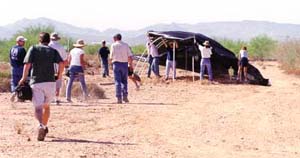 |
The tent material is drawn over the frame by volunteers and the tent is secured in place by dirt at the bottom of the tent. The tents look black from the outside but are easy so look through from the inside. The tents will stand up to high desert winds if the plastic pipe joints are glued together and enough dirt is used to weigh down the tent fabric against the ground. |
|
Goto next page for more Red Hawk site photos, information, and Burrowing Owl photographs. |
|
Copyright Greg Clark, 2001